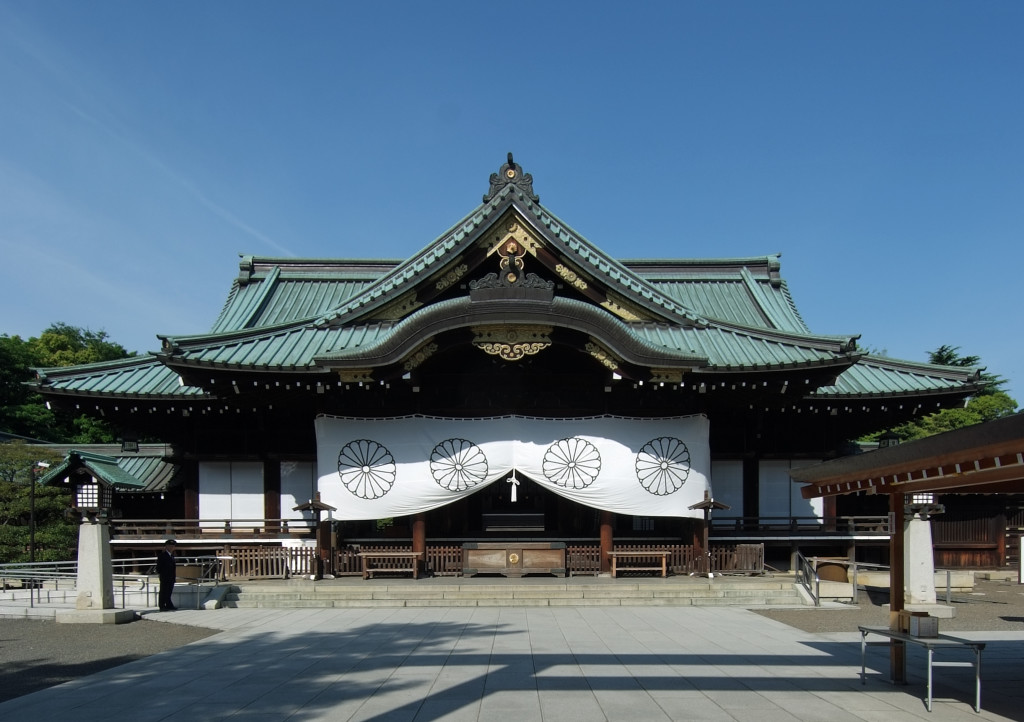Yasukuni Visits – How the Controversy Started
- By Peter Harmsen
- 28 December, 2013
- No Comments
 Japanese Prime Minister Shinzo Abe predictably stirred up a diplomatic storm when he visited Tokyo’s Yasukuni Shrine on December 26. China in particular was up in arms over Abe’s decision to become the first Japanese prime minister in seven years to honor Japan’s war dead, including 14 Class A war criminals, at the shrine, which is located right next to the Imperial Palace. “In the eyes of China, Abe, behaving like a political villain, is much like the terrorists and fascists on the commonly seen blacklists,” the state-controlled Chinese newspaper Global Times said in an editorial.
Japanese Prime Minister Shinzo Abe predictably stirred up a diplomatic storm when he visited Tokyo’s Yasukuni Shrine on December 26. China in particular was up in arms over Abe’s decision to become the first Japanese prime minister in seven years to honor Japan’s war dead, including 14 Class A war criminals, at the shrine, which is located right next to the Imperial Palace. “In the eyes of China, Abe, behaving like a political villain, is much like the terrorists and fascists on the commonly seen blacklists,” the state-controlled Chinese newspaper Global Times said in an editorial.
In fact, historically it has been fairly common for incumbent Japanese prime ministers to go to the Yasukuni Shrine. Junichiro Koizumi did it five times during his tenure in the period from 2001 to 2006, each time incurring the wrath not just of China but also of other countries that suffered grievously under Japanese imperialism in the first half of the 20th century. Altogether nine Japanese prime ministers have visited the shrine since 1972, when China and Japan normalized their relations, including Yasuhiro Nakasone, who went a record 10 times in the mid-1980s.
It’s safe to say that the visits have moved up the diplomatic agenda in East Asia in recent years, partly as a result of growing tension between Japan and its neighbors, most importantly China. With relations at a low point anyway, Japanese leaders have less to lose by visiting, and China faces correspondingly modest costs when reacting furiously. But it would be a mistake to see it all in terms of cool-headed power politics. There are real issues at stakes for China and other countries in the region. Memories of the war, combined with the perception that Japan has not come to terms with its violent past, trigger genuine emotions, probably all the way to the top of the hierarchy in Beijing, where policy is made.
The existence of Yasukuni per se as a place to commemorate those who died, mostly innocently, in service of their country throughout the modern era, is not the issue. It’s significant that the Yasukuni visits only became a major bone of contention after it was decided to also enshrine the 14 war criminals in 1978. Initially, the move was kept secret, and it didn’t become public until the year after. Everyone in decision-making circles in Tokyo knew how controversial the action was, not just abroad but also at home. Even Emperor Hirohito – himself the most prominent example of Japan’s ambiguous approach to its own modern history – decided (or was advised) to never visit the shrine again.



 Copyright © 2025
Copyright © 2025
Leave a Reply